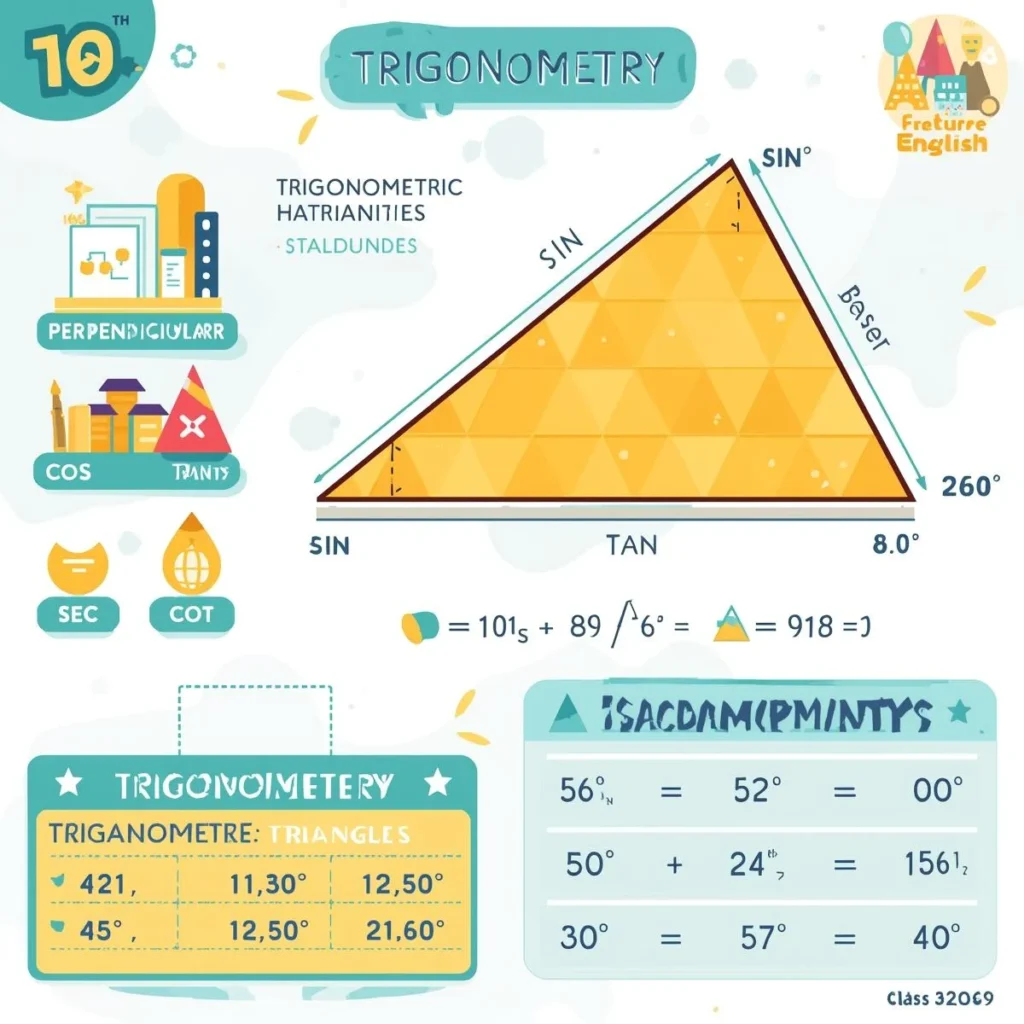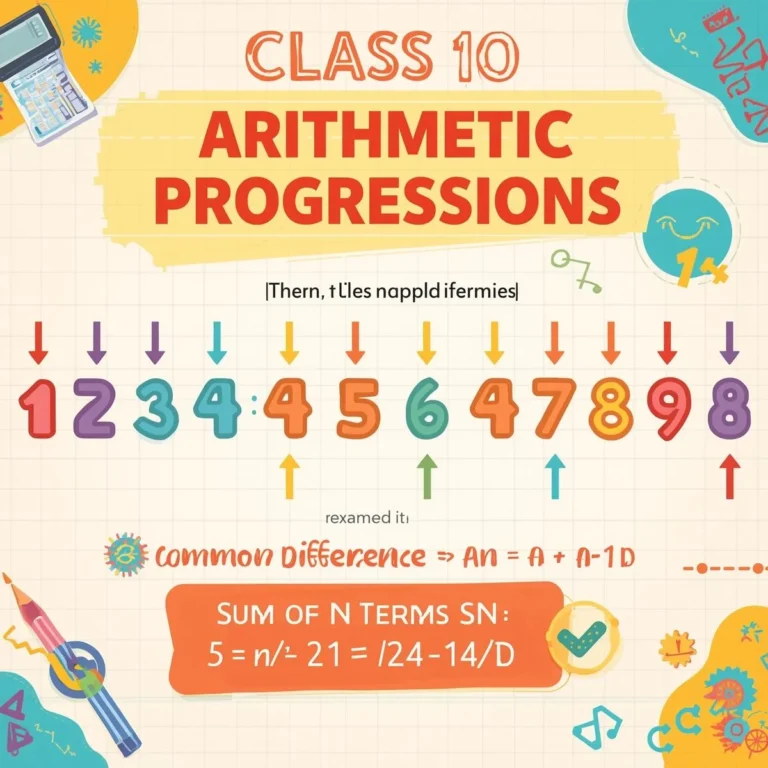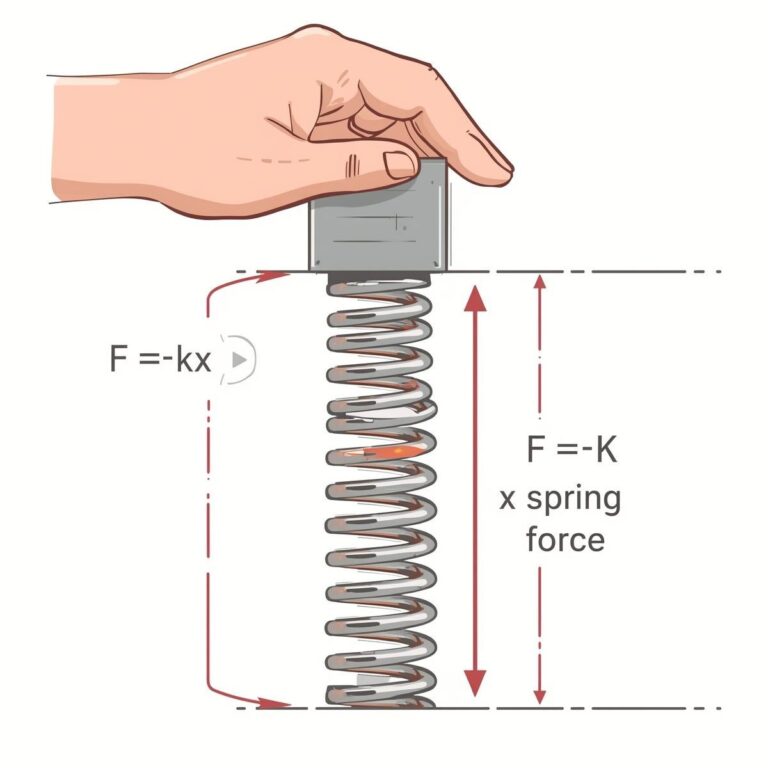TRIGONOMETRIC RATIO
Here we shall study some ratios of the sides of a right triangle with respect to its acute angles, called trigonometric ratios of the angle. We shall restrict our discussion to only acute angles, whereas we can extend the ratios for other angles also.

Let angle ∠XOY = be an acute angle having OX and OY as initial side and terminal side respectvely.
Let P be any point on OY, the terminal side. Draw PM, perpendicular from P on OX, the Thus, in right triangle OMP, Base OM (= x), Perpendicular = PM = (y), Hypotenuse = OP(r) and ∠ MOP = Now we define the six trigonometric ratios (known as t-ratios) as below:
(i) =
Perpendicular, which is written as sin
=
(ii) cosine =
which is written as cos
=
(iii) tangent =
= y/x which is written as tan
=
(iv) cosecant =
, which is written as cosec
=
(v) secant =
, which is written as sec
=
(vi) cotangent =
, which is written as cot
=
Definition
Trigonometry is the branch of mathematics that deals with the relationships between the angles and sides of right-angled triangles. It uses trigonometric ratios to relate the angles to the lengths of the sides.
Trigonometric Ratios
For a right-angled triangle with angle θ, opposite side (perpendicular), adjacent side (base), and hypotenuse:
- Sine (sin θ):
( \sin \theta = \frac{\text{Perpendicular}}{\text{Hypotenuse}} ) - Cosine (cos θ):
( \cos \theta = \frac{\text{Base}}{\text{Hypotenuse}} ) - Tangent (tan θ):
( \tan \theta = \frac{\text{Perpendicular}}{\text{Base}} ) - Cosecant (csc θ):
( \csc \theta = \frac{1}{\sin \theta} = \frac{\text{Hypotenuse}}{\text{Perpendicular}} ) - Secant (sec θ):
( \sec \theta = \frac{1}{\cos \theta} = \frac{\text{Hypotenuse}}{\text{Base}} ) - Cotangent (cot θ):
( \cot \theta = \frac{1}{\tan \theta} = \frac{\text{Base}}{\text{Perpendicular}} )
Values of Trigonometric Ratios for Standard Angles
| θ | 0° | 30° | 45° | 60° | 90° |
|---|---|---|---|---|---|
| sin θ | 0 | (\frac{1}{2}) | (\frac{1}{\sqrt{2}}) | (\frac{\sqrt{3}}{2}) | 1 |
| cos θ | 1 | (\frac{\sqrt{3}}{2}) | (\frac{1}{\sqrt{2}}) | (\frac{1}{2}) | 0 |
| tan θ | 0 | (\frac{1}{\sqrt{3}}) | 1 | (\sqrt{3}) | Not defined |
Trigonometric Identities
- ( \sin^2 \theta + \cos^2 \theta = 1 )
- ( 1 + \tan^2 \theta = \sec^2 \theta )
- ( 1 + \cot^2 \theta = \csc^2 \theta )
Example Problems
1. If ( \sin \theta = \frac{3}{5} ), find ( \cos \theta ) and ( \tan \theta ).
Let the perpendicular = 3, hypotenuse = 5.
Base = ( \sqrt{5^2 – 3^2} = \sqrt{25 – 9} = 4 )
- ( \cos \theta = \frac{4}{5} )
- ( \tan \theta = \frac{3}{4} )
2. Find the value of ( \sin 60^\circ + \cos 30^\circ ).
- ( \sin 60^\circ = \frac{\sqrt{3}}{2} )
- ( \cos 30^\circ = \frac{\sqrt{3}}{2} )
- Sum = ( \frac{\sqrt{3}}{2} + \frac{\sqrt{3}}{2} = \sqrt{3} )
Summary Table
| Ratio | Formula |
|---|---|
| sin θ | (\frac{\text{Perpendicular}}{\text{Hypotenuse}}) |
| cos θ | (\frac{\text{Base}}{\text{Hypotenuse}}) |
| tan θ | (\frac{\text{Perpendicular}}{\text{Base}}) |
| csc θ | (\frac{\text{Hypotenuse}}{\text{Perpendicular}}) |
| sec θ | (\frac{\text{Hypotenuse}}{\text{Base}}) |
| cot θ | (\frac{\text{Base}}{\text{Perpendicular}}) |






